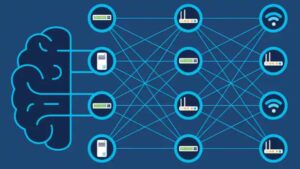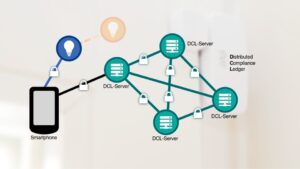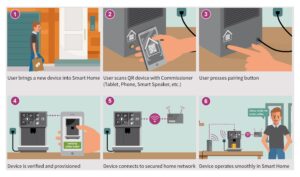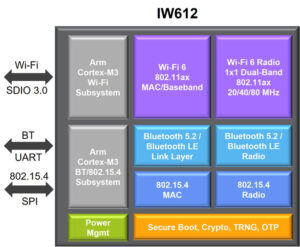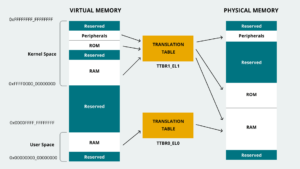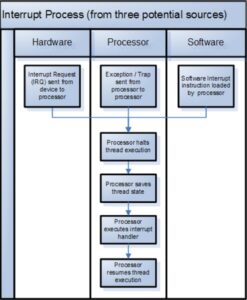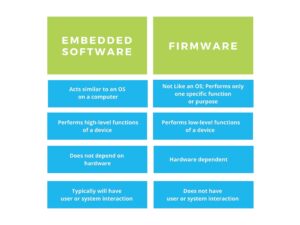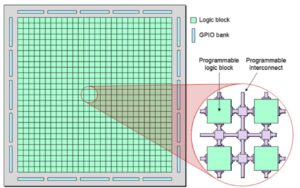The choice is driven by several factors, including the communications protocol or protocols being used and the device type and location within the local Matter ecosystem. Solution size requirements, powering expectations, and bandwidth needs are some deciding factors when choosing between various Matter platforms. If a MCU platform is used, there’s the added choice between […]
How does Matter support multiple fabrics?
In this context, a “fabric” is a group of networked devices that share the same security domain enabling secure communications within the fabric. Devices in each fabric share the same top-level certificate authority (CA), a Root of Trust determined by the CA, and have a unique (usually 64-bit) identifier called the Fabric ID. To add […]
What’s a distributed compliance ledger and how is one integrated into Matter?
A distributed ledger is a type of database that’s shared, copied, and synchronized within a decentralized network. The general principal is similar to the blockchain technology used by cryptocurrencies like Bitcoin. The distributed compliance ledger (DCL) developed by the Connectivity Standards Alliance (CSA), developers of Matter, is a type of distributed ledger used during the […]
What can designers make with Matter?
Matter enables designers to develop smart home accessories that work across all major wireless platforms. Mesh functions are possible because Matter operates as an application layer on top of technologies like Ethernet, Wi-Fi, Bluetooth, and Thread. Matter aims to simplify the setup and use of compatible smart home devices and bring some level of interoperability […]
What are the constituents of Matter?
Not elementary particles. The Matter being discussed here is an interoperable application layer software suite for wireless IoT devices. The constituents of that Matter include a modular software stack plus bridges, controllers, border routers, security including authentication, and cloud connectivity. Matter uses Thread, Wi-Fi, Ethernet transport, and Bluetooth LE for commissioning. Matter was initially called […]
How does Matter work as middleware for IoT devices?
Matter has been called an interoperable application layer solution, and the same source, the Connectivity Standards Alliance that oversees the development of Matter, refers to it as a protocol. This FAQ explores the definitions of communications interfaces and protocols. Compares those definitions with Matter and presents the possibility that Matter is not a protocol but […]
How many internal memories does an MCU have?
The number of internal memories in an MCU depends on how the memory is categorized. At the highest level, there are two; random access memory (RAM) and read-only memory (ROM). But, if the interest is in memory performance, there are different types of RAM and ROM. And these different types of memory can be employed […]
Exceptions, traps and interrupts, what’s the difference?
Exceptions and interrupts pause a program in response to an unexpected event in hardware or software. Interrupts are asynchronous events, and exceptions are synchronous events, but the difference between interrupts and exceptions also depends on the circumstances. For example, the definitions differ between x86 machines and ARM processors and between CISC and RISC processors. This […]
How do firmware, system software, and application software work together?
Firmware, system software (also called embedded software), middleware and application software work collaboratively and perform specific functions in embedded systems. Firmware, system software, and middleware are generally preloaded in an MCU. Applications software may be preloaded but is often added after the system has been built. This FAQ reviews the functions and interactions between firmware, […]
What do MCUs have that FPGAs don’t?
Microcontroller units (MCUs) have a computer processor unit (CPU) core, various types of memory, input/output (I/O) functions, and a range of integrated peripherals. Field programmable gate arrays (FPGAs) don’t have any of these features and consist of many configurable (or programmable) logic blocks, with a programmable interconnect overlay surrounded by numerous general purpose I/Os (GPIOs). […]


